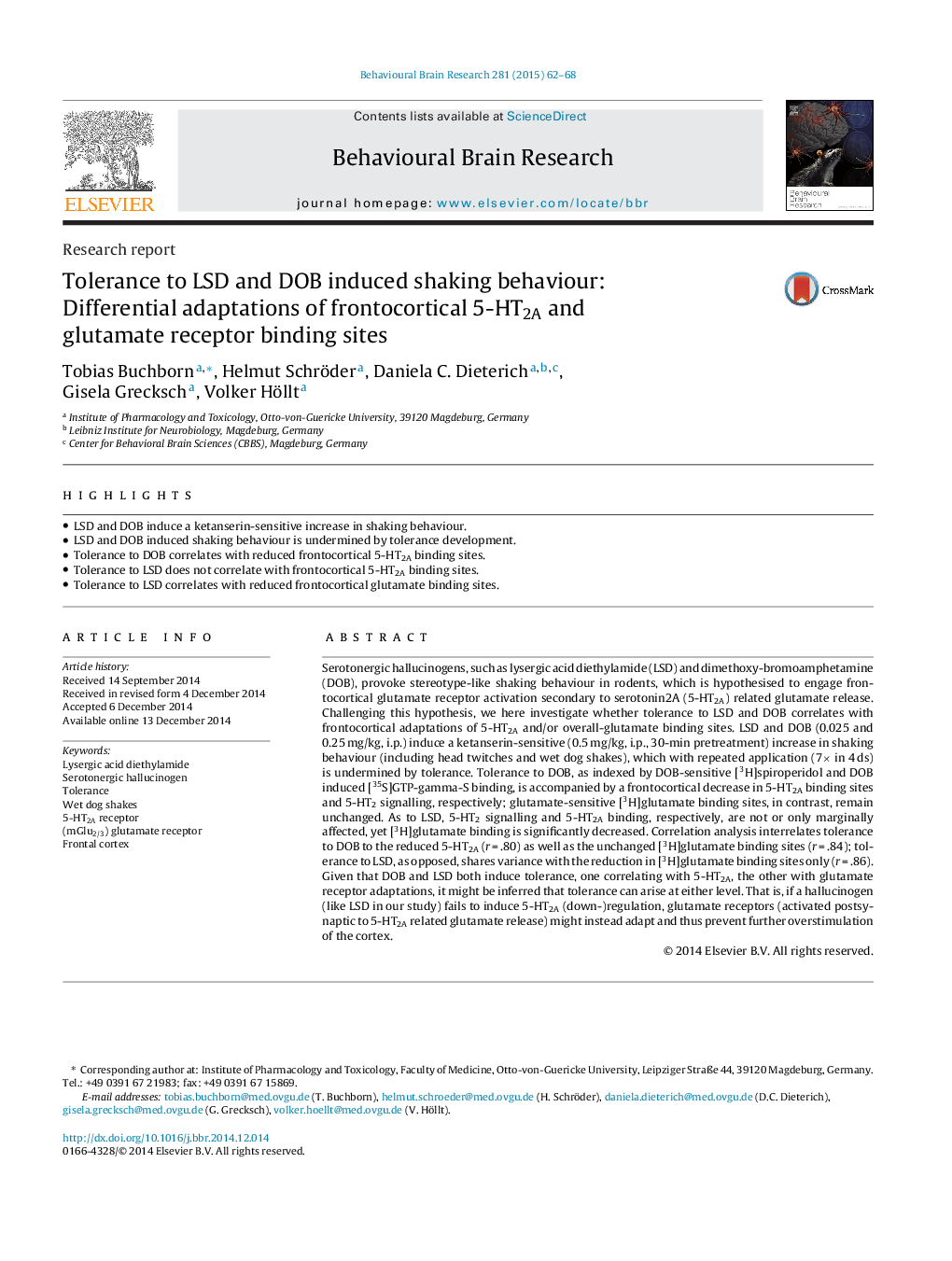| کد مقاله | کد نشریه | سال انتشار | مقاله انگلیسی | نسخه تمام متن |
|---|---|---|---|---|
| 6256960 | 1612951 | 2015 | 7 صفحه PDF | دانلود رایگان |

- LSD and DOB induce a ketanserin-sensitive increase in shaking behaviour.
- LSD and DOB induced shaking behaviour is undermined by tolerance development.
- Tolerance to DOB correlates with reduced frontocortical 5-HT2A binding sites.
- Tolerance to LSD does not correlate with frontocortical 5-HT2A binding sites.
- Tolerance to LSD correlates with reduced frontocortical glutamate binding sites.
Serotonergic hallucinogens, such as lysergic acid diethylamide (LSD) and dimethoxy-bromoamphetamine (DOB), provoke stereotype-like shaking behaviour in rodents, which is hypothesised to engage frontocortical glutamate receptor activation secondary to serotonin2A (5-HT2A) related glutamate release. Challenging this hypothesis, we here investigate whether tolerance to LSD and DOB correlates with frontocortical adaptations of 5-HT2A and/or overall-glutamate binding sites. LSD and DOB (0.025 and 0.25 mg/kg, i.p.) induce a ketanserin-sensitive (0.5 mg/kg, i.p., 30-min pretreatment) increase in shaking behaviour (including head twitches and wet dog shakes), which with repeated application (7à in 4 ds) is undermined by tolerance. Tolerance to DOB, as indexed by DOB-sensitive [3H]spiroperidol and DOB induced [35S]GTP-gamma-S binding, is accompanied by a frontocortical decrease in 5-HT2A binding sites and 5-HT2 signalling, respectively; glutamate-sensitive [3H]glutamate binding sites, in contrast, remain unchanged. As to LSD, 5-HT2 signalling and 5-HT2A binding, respectively, are not or only marginally affected, yet [3H]glutamate binding is significantly decreased. Correlation analysis interrelates tolerance to DOB to the reduced 5-HT2A (r = .80) as well as the unchanged [3H]glutamate binding sites (r = .84); tolerance to LSD, as opposed, shares variance with the reduction in [3H]glutamate binding sites only (r = .86). Given that DOB and LSD both induce tolerance, one correlating with 5-HT2A, the other with glutamate receptor adaptations, it might be inferred that tolerance can arise at either level. That is, if a hallucinogen (like LSD in our study) fails to induce 5-HT2A (down-)regulation, glutamate receptors (activated postsynaptic to 5-HT2A related glutamate release) might instead adapt and thus prevent further overstimulation of the cortex.
Journal: Behavioural Brain Research - Volume 281, 15 March 2015, Pages 62-68